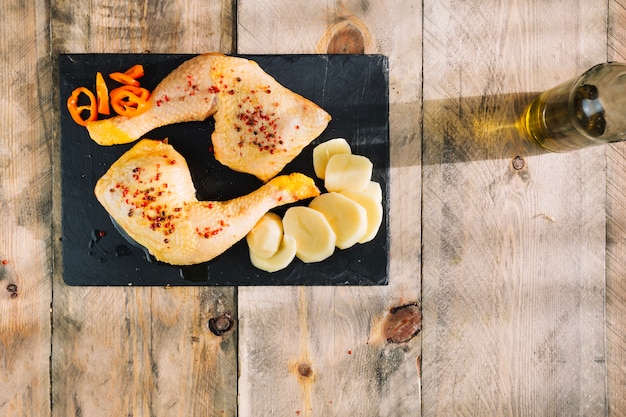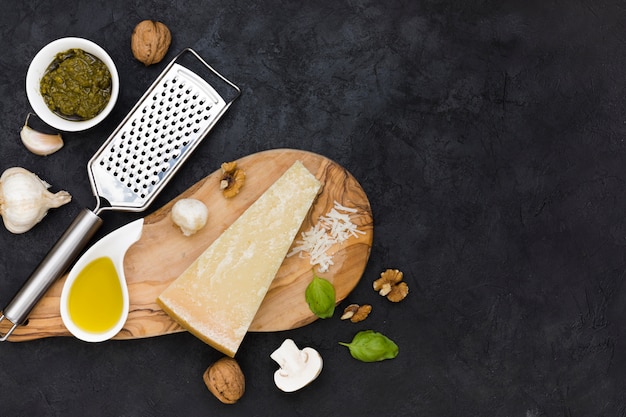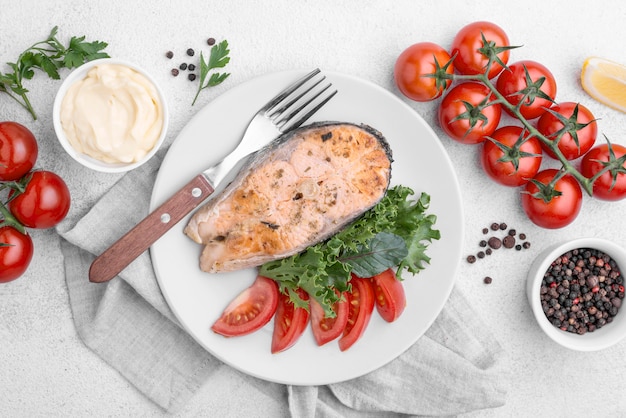(Part 1) Choosing the Right Cod: The Foundation of a Great Meal

Fresh vs. Frozen: Unveiling the Great Debate
Fresh fish is a bit of a luxury. It’s often more expensive and can be harder to find, especially if you don't live near the coast. But when you can get your hands on it, it’s a real treat! The texture and flavour of fresh cod are unbeatable. Frozen cod, on the other hand, is a bit more practical. It's readily available, it's often cheaper, and it has a longer shelf life. The key is to defrost it properly before cooking, otherwise, you'll end up with a mushy mess.
Skin-On or Skin-Off: A Matter of Preference
There's no right or wrong answer here, it’s all about personal preference. Skin-on cod is more traditional, and it helps to keep the fillets moist during cooking. You can also achieve a lovely crispy skin by pan-frying it. But let's be honest, some people find the skin a bit chewy, and it can be a bit of a faff to remove after cooking. Personally, I prefer skin-off, as I find it easier to cook and I can get that lovely crispy skin effect by pan-frying. But hey, it’s your call!
Thick or Thin: choosing the right cut
The thickness of the cod fillet matters, especially if you're pan-frying. Thicker fillets are ideal for pan-frying as they cook more evenly and don’t dry out as easily. If you’re baking or roasting, thinner fillets are fine. Just keep an eye on them so they don’t overcook.
(Part 2) Prepping Your Cod: Getting Ready to Cook

Pat It Dry: A Crucial Step for Perfect Results
One of the most important things you can do is to pat your cod fillets dry with kitchen paper. This helps to create a crispy skin when pan-fried and ensures even cooking. If you leave them wet, they’ll steam instead of browning, and no one wants soggy fish.
Seasoning Time: Enhancing Flavour with Herbs and Spices
Now for the fun bit, seasoning! A simple sprinkle of salt and pepper is always a good starting point, but you can get creative here. Lemon zest, garlic powder, smoked paprika, dried herbs – the possibilities are endless! Let your imagination run wild, but be sure to season generously.
(Part 3) pan-fried cod: A Classic for a Reason

Pan-fried cod is a classic for a reason – it's quick, easy, and produces beautifully crispy results. Here's how I do it:
Getting Started: Heating the Pan and Oil
Start by heating a good quality olive oil in a heavy-bottomed pan over a medium heat. If you’re using a non-stick pan, you can use less oil. You want the oil to be shimmering hot before you add the cod, so it sears beautifully.
cooking time: Mastering the perfect sear
Once the oil is shimmering, add the cod fillets, skin-side down first. This helps to create a crispy skin. Let the fillets cook undisturbed for about 3-4 minutes on each side, or until they’re golden brown and cooked through. You can check if they’re cooked by gently pressing the flesh with a fork. It should be firm and flake easily.
Finishing Touches: Resting and Enhancing the Flavour
Once the cod is cooked, remove it from the pan and let it rest for a few minutes before serving. This allows the fillets to absorb their juices and become even more tender. Now it’s time to get creative! You can serve your pan-fried cod with a squeeze of lemon juice for a simple and refreshing touch. Or, you can elevate it with a herby sauce, a dollop of creamy pesto, or even a sprinkle of toasted breadcrumbs.
(Part 4) baked cod: A Simple and Delicious Option
If you're looking for a hands-off option, baked cod is the way to go. It's perfect for a weeknight dinner or a relaxed weekend meal. Here's how I do it:
Prepare Your Baking Dish: Ensuring Even Cooking
Preheat your oven to 180°C (350°F). Lightly grease a baking dish with olive oil or butter. This will prevent the cod from sticking and ensure even cooking.
Adding Flavour: Unleashing Your Creativity
Now it’s time to get creative with your flavours. You can simply bake the cod with a drizzle of olive oil, salt and pepper, or add a few chopped vegetables, like tomatoes and onions, for a more substantial meal. For a burst of flavour, try a lemon and herb mix, or add some Dijon mustard and cream for a rich and creamy sauce. Don't be afraid to experiment!
Baking Time: Reaching perfect tenderness
Bake the cod for 15-20 minutes, or until it’s cooked through. You’ll know it’s done when the flesh is flaky and opaque.
Serving Suggestions: Pairing with Sides for a Complete Meal
Baked cod is delicious on its own, but it pairs well with a side of roasted vegetables, mashed potatoes, or a simple green salad. I love to serve it with a dollop of Greek yoghurt mixed with chopped dill and lemon zest.
(Part 5) Roasted Cod: A Versatile Option for Large Batches
Roasting cod is a great way to cook a whole batch at once, perfect for a family meal or a dinner party. It’s a simple technique that yields delicious results.
Prepping for Roasting: Preparing the Tray
Preheat your oven to 200°C (400°F). Line a baking tray with parchment paper for easy clean-up. This will help to prevent the cod from sticking and make cleaning a breeze.
Seasoning and Roasting: Simple Yet Effective
Season your cod fillets with salt, pepper, and any other spices you like. Arrange them on the baking tray, ensuring they’re not overlapping. Roast in the oven for 15-20 minutes, or until the flesh is cooked through and flaky.
A Roasting Tip: Adding Moisture
For extra moisture, try adding a few tablespoons of water to the baking tray. This creates a little steam, helping to keep the cod succulent. It’s a simple trick that makes a big difference.
Serving Suggestions: Creating a Balanced Meal
Roasted cod is delicious with a simple green salad, a side of couscous, or a creamy potato gratin.
(Part 6) cod recipes You Must Try: Culinary Inspiration Awaits
Alright, so you’ve got the basics. Now it’s time for some recipe inspiration. Here are a few of my personal favourites:
Cod with Lemon and Herbs: A Classic for a Reason
This is a classic recipe that’s simple to make and always delicious. Simply pan-fry the cod fillets in olive oil, then sprinkle them with lemon zest, chopped parsley, and a pinch of garlic powder. Serve with a squeeze of lemon juice.
cod fishcakes: A Hearty and Satisfying Dish
For a heartier dish, try cod fishcakes. Combine flaked cod with mashed potato, chopped herbs, and seasoning. Shape the mixture into patties and pan-fry until golden brown. Serve with a salad or a dollop of tartar sauce.
Creamy Cod Bake: comfort food at its Finest
For a comforting meal, bake the cod fillets in a creamy sauce made with milk, cream, and a handful of grated cheese. Add some chopped vegetables, like mushrooms and spinach, for extra flavour and texture.
Cod and Chorizo Stew: A Spicy and Flavourful Delight
This is a bit more adventurous, but trust me, it’s worth it! Simmer cod fillets in a spicy tomato stew with chorizo sausage, onions, and peppers. Serve with a crusty bread.
Cod with Roasted Vegetables: A Simple Yet Delicious Combination
This is a simple but delicious combination. Roast the cod fillets with seasonal vegetables like broccoli, carrots, and bell peppers. Drizzle with a balsamic glaze for extra flavour.
(Part 7) Storage and Leftovers: Maximizing Your Cod
Now, let’s talk about storage. Fresh cod is best eaten on the day of purchase, but if you need to store it, keep it in the fridge for up to two days. Wrap it tightly in cling film or store it in an airtight container.
Leftover cod is a great ingredient for a quick lunch or dinner. You can add it to salads, sandwiches, or even use it to make fish cakes. Just make sure you reheat it thoroughly before serving.
(Part 8) Frequently Asked Questions: Answering Your Burning Queries
1. What does cod taste like?
Cod has a mild, slightly sweet flavour. It's not as strong as some other fish, making it a great choice for people who are new to seafood. It's a versatile fish that pairs well with a variety of flavours.
2. Is cod healthy?
Absolutely! Cod is a great source of protein, omega-3 fatty acids, and vitamin D. It's also low in calories and fat. It’s a healthy and delicious choice for any meal.
3. How do I know if cod is cooked?
You’ll know your cod is cooked through when the flesh is opaque, flakes easily with a fork, and is no longer translucent. It should be firm to the touch and have a slight spring to it.
4. Can I freeze cod?
Yes, you can freeze cod. Wrap it tightly in cling film or store it in an airtight container. Frozen cod can last in the freezer for up to 3 months. It's a great way to stock up on this versatile fish.
5. What goes well with cod?
Cod is incredibly versatile. It pairs well with a variety of flavours, including lemon, garlic, herbs, butter, cream, and even spicy ingredients like chorizo or chili flakes. It also works well with roasted vegetables, salads, and mashed potatoes. You can create endless flavour combinations!
(Part 9) My Final Thoughts on Cooking Cod: A culinary journey
So there you have it, my ultimate guide to cooking delicious cod fillets. From choosing the right fillets to mastering different cooking techniques, I've shared all my tips and tricks with you. Don't be afraid to experiment with different flavours and recipes – cod is a blank canvas for your culinary creativity.
I really hope you find this guide helpful. Now get out there and start cooking some delicious cod! Happy cooking!
Everyone is watching

How to Cook Frozen Lobster Tails Perfectly: A Step-by-Step Guide
RecipesLobster. Just the word conjures up images of lavish meals, special occasions, and a taste of luxury. But let's...

Pigs in a Blanket Cooking Time: How Long to Bake for Perfect Results
RecipesAh, pigs in a blanket. Just the name conjures up images of those delightful little parcels of crispy pastry en...

Pork Fillet Cooking Time: How Long to Cook It Perfectly
RecipesPork fillet, or tenderloin as it's sometimes called, is a real favourite in our house. It's so versatile, and...

The Ultimate Guide to Tender, Juicy Pulled Pork
RecipesRight, let's talk pulled pork. It's one of those dishes that just screams "comfort food," doesn't it? I mean...

The Ultimate Guide to Cooking Sweet Potatoes: From Roasting to Mashing
RecipesSweet potatoes. Just the name conjures up images of warm, comforting dishes, bursts of vibrant color, and a to...
